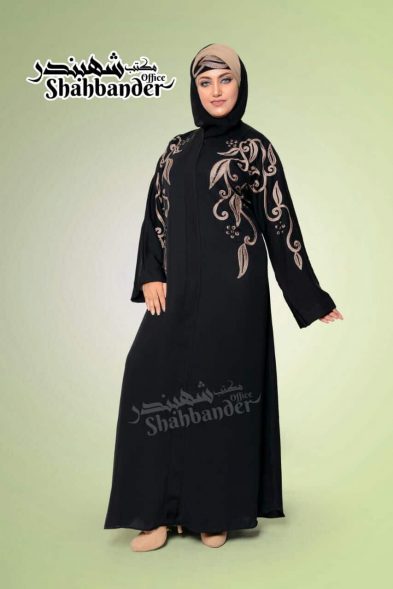Egyptian Abaya as an Oriental Culture
What is the Egyptian Abaya ?In the past, the abaya was a loose black dress that covered the body and concealed its features for greater decency and respect and to indicate the commitment of those who wore .
Today, the abaya is a stand-in costume, competing for and overcoming the evening dresses that bear the signature of the world’s most famous fashion houses.
Abaya”, which some may see a normal black dress does not cost anything that has to change this view because this outfit requires four stages starting from the purchase of cloth and through the selection of the model and accessories stand at the tailor to get it finally in the form required may be prolonged and shorten the abaya because The final form is not specified by the owner. The specificity of Egyptian women is reduced to the burden that distinguishes them from other Arab women.

Egyptian Abaya
Abayas, which distinguish the women of all the Arab countries, although they differ in simple detail, are known by their design, embroidery, and additives to any country that returns, and the decency remains the main element.
Women used to wear an abaya in Mesopotamia, which was meant to cover the body and facilitate the movement of women working in the land. The headscarf was a small scarf to protect against the strong sunlight. The chanting women used to wear the flowing robes that covered the entire body and the veil that prevented them from seeing the head and face so that they could distinguish themselves from women farmers so that they would not appear in front of the eyes.
The shape of the hijab has changed after it became religiously imposed, and the abaya became the most appropriate dress for women because it preserves its dignity and respect. The black color was adopted in most Islamic countries because it is less noticeable, but this does not mean that the woman could not pick different colors.
Between silk and wool
It is true that the abaya originates in Mesopotamia, but it spread hundreds of years ago in all the Arab countries. Its shape and model differed according to the climatic conditions, life, customs, traditions and characteristics of each country, so the abaya differed in Saudi Arabia from those that spread in the UAE or Egypt or Palestine or Jordan or Iraq, and characterized the Gulf gowns depending on light fabrics such as silk and soft crepe and velvet light because of the high temperatures that characterize those countries. The abayas, which spread in the Levant, were woven from wool, velvet, and cashmere, and relied on bright colors, embroidery, and trimmings.
Egyptian Abaya
Undoubtedly, the Arab Badia women were racing to wear the black abaya, because it is practical and comfortable and suited to the life of the desert and the conditions of living there.
Whatever its shape, the black abaya remains the wardrobe of your wardrobe and indispensable. Whether you prefer classical or innovative abayas.
Abaya models of the basic pieces in the wheel of many veiled girls, and most designers try to put their own fingerprints on the designs to receive the most impressive slice of veiled, and this year spread abaya models with Arab touches from all countries, headed by Morocco, Bahrain, Emirates, Egyptian embroidery Bedouin and El Senawy colored colors.


